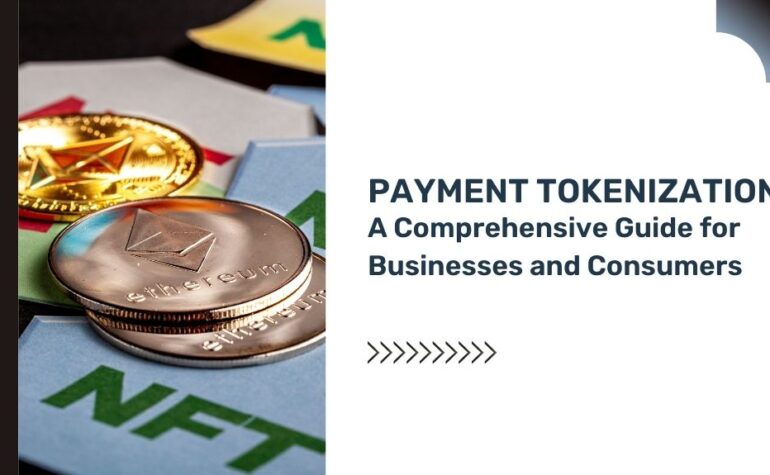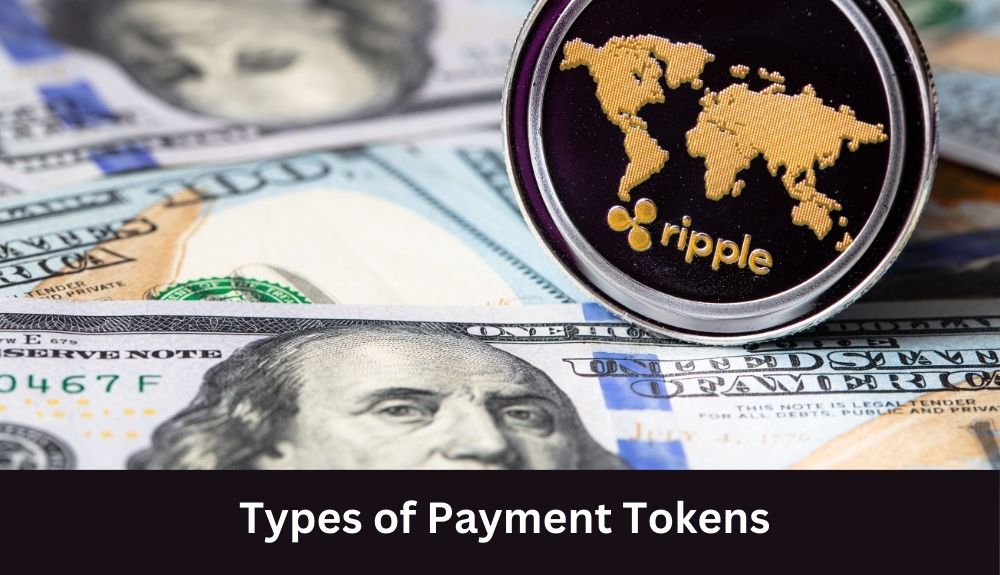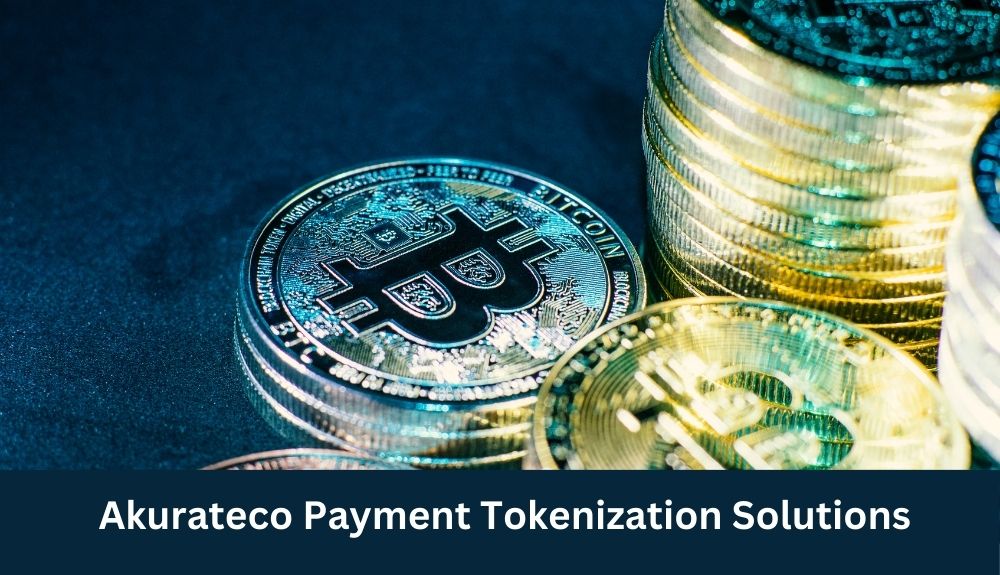Best Credit Card Processing Solutions Tailored for Every Industry

By merchantservices April 3, 2024
Imagine a world where every payment made is shielded by an invisible armor, impervious to cyber threats and data breaches. This world exists within the realm of payment tokenization, a cutting-edge technology that ensures secure transactions while safeguarding sensitive information. But what exactly is payment tokenization, and how can it benefit businesses and consumers alike? Let’s delve into the realm of token-based payment systems to uncover the answers.
In this comprehensive guide, we will demystify the concept of payment tokenization, shedding light on how it enhances security measures and protects valuable data during payment transactions. From understanding the various types of tokens to exploring real-world applications in the payment industry, we will walk you through the intricate web of tokenization systems. Discover how businesses can seamlessly implement payment tokenization to fortify their transaction processes and fortify against potential risks.
Join us on a journey to explore the advantages of token-based payment systems and their profound impact on data protection. Learn how tokenization is revolutionizing the way we approach secure transactions and why it is becoming an indispensable tool in today’s digital landscape.
Introduction to Payment Tokenization
In today’s digital landscape, security is paramount, especially when it comes to payment transactions. This is where payment tokenization plays a crucial role. Payment tokenization is a method of enhancing security by replacing sensitive data, such as credit card numbers, with unique tokens. These tokens are meaningless strings of characters that hold no intrinsic value.
The primary purpose of payment tokenization is to protect sensitive information during payment transactions, reducing the risk of data breaches and unauthorized access. By substituting the original data with tokens, businesses can ensure that even if the tokens are intercepted, they hold no value to potential attackers.
The significance of payment tokenization lies in its ability to fortify data security and provide peace of mind for consumers and businesses alike. With the rapid growth of digital payments and online transactions, the need for robust security measures has become increasingly critical. Payment tokenization addresses this growing challenge by lowering the vulnerability of financial data and minimizing the likelihood of payment fraud.
By adopting token-based payment systems, merchants can create a safer environment for their customers, fostering trust and confidence in their business. Moreover, payment tokenization streamlines compliance with the Payment Card Industry Data Security Standard (PCI DSS), which ensures that businesses meet specific security requirements when handling payment information.
In the following sections, we will dive deeper into the concept of payment tokenization, exploring its various types, benefits, and implementation strategies. By gaining a comprehensive understanding of payment tokenization, businesses can make informed decisions to enhance the security of their payment transactions.
What is Payment Tokenization?
Payment tokenization is a security measure that helps protect sensitive data in payment transactions. It involves replacing sensitive information, such as credit card numbers or bank account details, with unique tokens. These tokens have no intrinsic value and cannot be used to identify the original data. Instead, they serve as a reference to retrieve the actual payment information securely stored in a tokenization system.
The Purpose of Payment Tokenization
The primary purpose of payment tokenization is to enhance data security and minimize the risk of data breaches. By substituting sensitive data with tokens, payment tokenization ensures that the original data is not transmitted or stored in its vulnerable form during payment transactions. This reduces the chances of unauthorized access and minimizes the impact of a potential breach.
The Process of Tokenization
The tokenization process involves several steps to ensure the secure transformation of sensitive payment information. Here’s a brief overview:
1. Data Collection: When a customer initiates a payment, their sensitive payment information, such as the credit card number and expiration date, is collected.
2. Token Generation: The payment processor or tokenization service provider generates a unique token that replaces the original payment data. This token is specific to the merchant, transaction, and payment network, making it useless outside of that context.
3. Storage and Mapping: The token, along with the original payment data, is securely stored in a tokenization system. The system maintains a mapping between the token and the original data to retrieve the actual payment information when needed.
4. Transaction Processing: During a payment transaction, the token is used instead of the original payment data. The token is transmitted between the involved parties, ensuring that the sensitive information remains protected.
5. Token Decryption: When necessary, the tokenization system decrypts the token and retrieves the corresponding original payment data. This data is securely provided to complete the transaction.
By replacing sensitive information with tokens, payment tokenization significantly reduces the exposure of data to potential security threats. In the event of a data breach, the compromised tokens hold no value, safeguarding the customers’ cardholder data from unauthorized use.
Overall, payment tokenization offers businesses and consumers a secure and efficient way to process payments while protecting sensitive payment information. It is a vital component of modern payment systems and plays a crucial role in ensuring data security in today’s digital landscape.
Types of Payment Tokens

Payment tokens are an essential component of token-based payment systems. They serve as unique identifiers that replace sensitive data, such as credit card numbers or bank account information, during payment transactions. Understanding the different types of payment tokens is crucial for businesses and consumers alike. Here are the key types of payment tokens:
1. Acquirer Tokens
Acquirer tokens are generated by the acquiring bank or payment processor. They serve as a reference to the cardholder’s payment information but do not contain any of the original sensitive data. Acquirer tokens are used during the payment authorization process and help facilitate secure and seamless transactions.
2. Issuer Tokens
Issuer tokens are provided by the card issuer and are associated with a specific payment card. They are used for authorization and authentication purposes, enabling secure transactions between merchants and cardholders. Issuer tokens help protect cardholder data and prevent unauthorized access to sensitive information.
3. Network or Scheme Tokens
Network or scheme tokens are generated by payment networks, such as Visa or Mastercard. They represent the primary account number (PAN) and are used for various payment transactions. Scheme tokens enhance security by replacing the PAN with a token, ensuring that sensitive data is not exposed during the payment process.
4. Payment Tokens
Payment tokens are unique identifiers generated by tokenization systems. They are specific to a particular transaction and used in place of the original payment data. Payment tokens enable secure payments without exposing sensitive information, offering enhanced protection against data breaches and fraud.
5. Merchant Tokens
Merchant tokens are generated by individual merchants and used for tokenized payment processing. They serve as references to customer payment information and allow for efficient and secure transactions. Merchant tokens are specific to each merchant and cannot be used interchangeably.
By leveraging these various types of payment tokens, businesses can enhance data security, reduce the risk of data breaches, and streamline payment processes. Consumers can enjoy peace of mind knowing that their sensitive information is protected during transactions. Implementing token-based payment systems with the appropriate payment tokens is crucial for fostering a secure and trustworthy payment environment.
Benefits of Payment Tokenization
Token-based payment systems offer numerous advantages for businesses and consumers alike. By implementing payment tokenization, companies can significantly enhance data security, simplify PCI DSS compliance, streamline payment processing, and ultimately build customer trust and confidence.
Enhanced Data Security
One of the primary benefits of payment tokenization is the heightened level of data security it provides. Tokenization replaces sensitive information, such as credit card numbers, with unique tokens. These tokens have no intrinsic value and are meaningless to potential attackers. Even if a breach occurs, the stolen tokens cannot be used to access the original data, thereby minimizing the risk of data breaches and fraudulent activities.
Simplified PCI DSS Compliance
Payment Card Industry Data Security Standard (PCI DSS) compliance is a necessary requirement for businesses that handle payment card information. Tokenization simplifies this process by reducing the scope of PCI compliance assessments. Since tokens replace sensitive payment data, businesses only need to secure the tokenization system, which significantly reduces the burden of compliance obligations.
Streamlined Payment Processing
Token-based payment systems streamline the payment process, making transactions faster and more efficient. With tokenization, businesses no longer need to transmit and store their customers’ sensitive payment information. Instead, they can send tokens, which are smaller in size and easier to process. This not only reduces the volume of sensitive data transmission but also improves transaction speed and overall payment processing capabilities.
Fortified Customer Trust and Confidence
Protecting customer data is crucial for maintaining trust and confidence in the digital age. Token-based payment systems offer customers peace of mind knowing that their sensitive information is secure. When businesses prioritize data protection through tokenization, they establish themselves as trustworthy and reliable partners, fostering long-term customer relationships and repeat business.
In summary, the benefits of payment tokenization are extensive. Improved data security, simplified PCI DSS compliance, streamlined payment processing, and fortified customer trust and confidence are just some of the advantages that businesses can enjoy by adopting token-based payment systems. By leveraging these benefits, businesses can enhance their overall security posture and provide their customers with a safer and more seamless payment experience.
Tokenization vs Encryption
When it comes to securing payment transactions and protecting sensitive data, two common methods are tokenization and encryption. While both techniques play crucial roles in enhancing security, they serve different purposes and have distinct functionalities.
Tokenization: Replacing Sensitive Data with Unique Tokens
Tokenization is a process that involves replacing sensitive information, such as credit card numbers or personal identification numbers (PINs), with unique tokens. These tokens have no intrinsic value and are randomly generated strings of characters. The original data, which holds the actual sensitive information, is securely stored in a tokenization system.
How Tokenization Works
1. Data Collection: When a customer initiates a payment transaction, their payment data, such as credit card number and expiration date, is collected.
2. Token Generation: The sensitive payment information is sent to a tokenization service, which generates a unique token to represent the original data. This token is what gets transmitted and stored.
3. Secure Storage: The original sensitive data is securely stored in a tokenization system, typically maintained by a trusted third-party service provider.
4. Authorization: When a payment is processed, the token is used for authorization, allowing the transaction to be completed without exposing the actual sensitive information.
Advantages of Tokenization
– Enhanced Data Security: As tokens do not contain any sensitive information, they have no value to potential hackers or attackers, reducing the risk of data breaches.
– Simplified Compliance: Tokenization helps businesses simplify Payment Card Industry Data Security Standard (PCI DSS) compliance by reducing the scope of sensitive data that needs to be protected.
– Streamlined Payment Processing: Utilizing tokens allows for faster and more efficient payment processing, as there is no need to handle and transmit sensitive data.
– Fortified Customer Trust: By implementing token-based payment systems, businesses can enhance customer trust and confidence in the security of their transactions.
Encryption: Concealing Data with Complex Algorithms
Encryption is the process of transforming data into an unreadable format using complex algorithms. The encrypted data, also known as ciphertext, can only be accessed with an encryption key or password.
How Encryption Works
1. Data Encryption: Payment data is transformed using encryption algorithms, resulting in ciphertext that appears as random characters.
2. Encryption Key: To decrypt the data and make it readable, an encryption key is required. Only authorized parties with the correct key can retrieve and access the original data.
Role of Encryption in Payment Security
Encryption is primarily used to secure data transmission between parties. It ensures that only the intended recipient can decipher the encrypted information, providing an additional layer of security for sensitive payment data.
Differentiating Tokenization and Encryption
While both tokenization and encryption are essential for securing payment transactions, they serve different purposes. Tokenization primarily focuses on replacing sensitive data with unique tokens to prevent data theft, while encryption secures data transmission through complex algorithms. By understanding the roles of both techniques, businesses can implement comprehensive security measures to protect sensitive payment information.
Implementing Payment Tokenization
Implementing payment tokenization is a crucial step for businesses aiming to enhance the security of their payment transactions. By replacing sensitive payment data with unique tokens, businesses can reduce the risk of data breaches and protect their customers’ confidential information. Here are some options for businesses to consider when implementing payment tokenization:
Choosing a Tokenization Service Provider
One option for businesses is to partner with a reputable tokenization service provider. These providers specialize in implementing and managing tokenization systems, ensuring the security and integrity of the tokenization process. By outsourcing tokenization to experts in the field, businesses can focus on their core operations while benefiting from robust data protection measures.
Integrating Tokenization into the Payment Infrastructure
Another approach is to integrate tokenization directly into the existing payment infrastructure. This involves working with payment processors or acquiring banks that offer tokenization capabilities. By integrating tokenization at the payment processing level, businesses can ensure that sensitive payment data is immediately tokenized before transmission, minimizing the risk of exposure.
Partnering with Payment Software Providers
Many payment software providers offer built-in support for tokenization. By partnering with these providers, businesses can implement tokenization seamlessly within their payment systems. These providers often offer software development kits (SDKs) or application programming interfaces (APIs) that facilitate the integration of tokenized payment solutions. This partnership enables businesses to leverage the existing infrastructure and expertise of the payment software provider while benefiting from enhanced data security.
In conclusion, businesses have several options for implementing payment tokenization. Whether they choose to work with a tokenization service provider, integrate tokenization into the payment infrastructure, or partner with payment software providers, the goal is to safeguard sensitive payment data and protect against potential data breaches. By embracing token-based payment systems, businesses can enhance security, build customer trust, and ensure the secure transmission of payment information.
Akurateco Payment Tokenization Solutions

Akurateco offers a range of comprehensive payment tokenization solutions that prioritize data security and enhance payment transactions. With their advanced tokenization system, businesses can protect sensitive payment information and reduce the risk of data breaches. Let’s take a closer look at some of the key solutions provided by Akurateco:
1. Card Tokenization
Card tokenization is a fundamental solution offered by Akurateco. It involves replacing sensitive credit card information with unique tokens. These tokens are generated through a secure process that ensures the original data cannot be reversed or derived from the token. This method significantly reduces the risk of sensitive card data being compromised, providing customers and businesses with peace of mind.
2. Recurring Payments Tokenization
For businesses that rely on recurring payments, Akurateco’s recurring payments tokenization solution offers a secure and convenient option. With this solution, businesses can generate tokens for recurring payments, eliminating the need for customers to continuously provide their payment information. This not only improves the user experience but also reduces the vulnerability of sensitive payment data.
3. Custom Invoices
Akurateco’s custom invoices feature allows businesses to create personalized invoices for their customers. By utilizing tokenization, the sensitive payment information on these invoices is replaced with tokens. This ensures that customer data remains secure during the payment process, even when it involves sharing invoices externally. Businesses can confidently send invoices without the risk of exposing sensitive payment information.
Security Measures
Akurateco prioritizes the security of their tokenization solutions. They implement robust security measures to prevent unauthorized access and ensure the integrity of sensitive payment data. These measures include encryption protocols, access controls, and secure storage mechanisms. By partnering with Akurateco, businesses can benefit from a reliable and secure tokenization service.
In conclusion, Akurateco’s payment tokenization solutions offer businesses the means to protect sensitive payment information and minimize the risk of data breaches. Through card tokenization, recurring payments tokenization, and custom invoices, businesses can streamline their payment processes while maintaining the highest level of data security. Akurateco’s commitment to implementing strong security measures ensures the trust and confidence of both businesses and customers.
